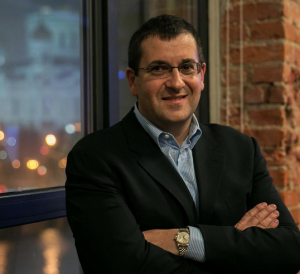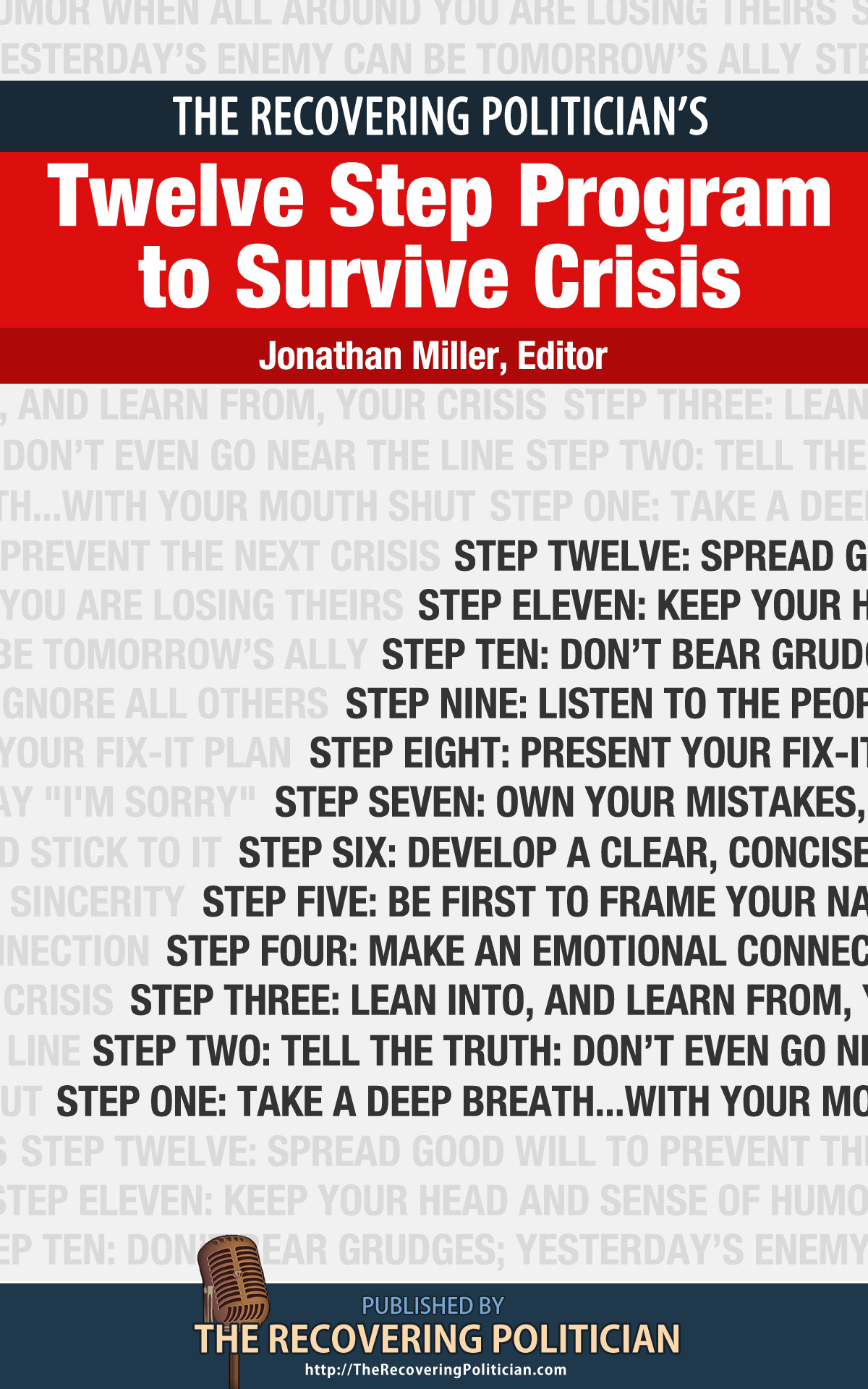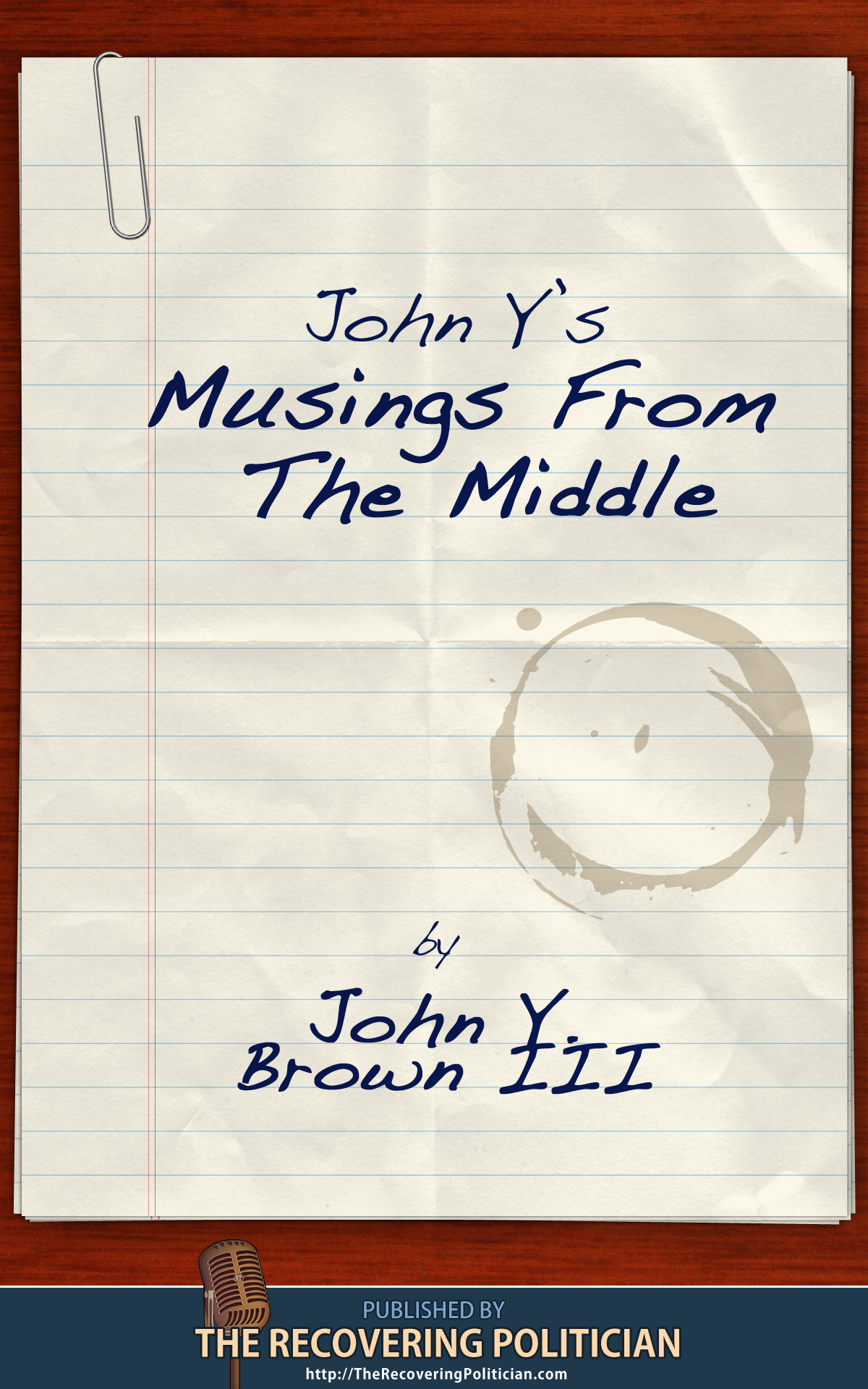By Erica and Matt Chua, on Tue Aug 26, 2014 at 8:30 AM ET Hiking the Himalayas shouldn’t be a dream as it is easier and cheaper than most people think. Want to cross this off your bucket list? You can indulge yourself in scenes like this for as little as $20 a day!

A view worth the walk from the Cho-La Pass on the Three Passes Trek.
Let me start with a quick intro: if I can do it, you can too. Traveling for almost two years has taken it’s toll on me. I probably couldn’t complete a 5k without requiring medical attention and have extra “padding” in places that need no padding. Prior to this my longest hikes were four days, staying in quasi-luxury New Zealand accommodations. In summary, you don’t need a Kenyan running partner to prepare for these hikes, reasonable fitness will suffice.

Part of the Annapurna Circuit, always surprising with beautiful views and unexpected changes from desert, to mountain, to lush oasis.
Read the rest of…
Erica and Matt Chua: Himalayan Hiking Logistics
By David Goldberg, on Mon Aug 25, 2014 at 1:30 PM ET “Now I’ll be bold as well as strong. Use my head alongside my heart.”
I Will Wait – Mumford and Sons
 In my last post, I talked about lessons I learned about myself during my continuing journey as an entrepreneur. You gain knowledge, mostly from your mistakes and your peers. You try to keep making constant improvements to your business, your team and your leadership skills. In the true entrepreneurial spirit of paying it forward, I thought I’d share some lessons about what I’ve learned about actually managing a business: In my last post, I talked about lessons I learned about myself during my continuing journey as an entrepreneur. You gain knowledge, mostly from your mistakes and your peers. You try to keep making constant improvements to your business, your team and your leadership skills. In the true entrepreneurial spirit of paying it forward, I thought I’d share some lessons about what I’ve learned about actually managing a business:
1. Be smart about funding. Raise money when you don’t need it, and raise it from the right investors. Don’t wait until you’re cash strapped to push the panic button, and look for investors who go beyond the wire transfer; those that will provide consistent guidance and be true coaches along the way.
This is clearly easier said than done. I have seen too many first time founders who have focused on the wrong things like valuation or control issues instead of getting investors who will add value beyond their cash. Some investors can actually harm your business- I was unfortunate to have a few of those in my first company and it had a very negative impact on our growth.
2. Fail fast. Most new ideas won’t work but you need to keep trying. Then, be ruthless about killing the ones that aren’t working and try to do it as quickly as possible. Time, money and focus are very limited resources in a startup. An idea that isn’t working can be a big drain.
3. Build a business, not just a great product or service. While it is fine to start with a great idea for a service or product and not worry about revenue immediately, you want to have a clear picture of where you will get paid and how you will build a sustainable business. Today, in the internet space, you can build interesting products quickly but it is much harder to build long term businesses with deep competitive moats.
4. Look at each market differently. When expanding beyond your own backyard, be prepared to address the specific concerns of multiple markets – a one-size-fits-all global strategy doesn’t work. Geo-specific insights, customer feedback, local case studies and social media channels are pivotal resources for establishing a voice that resonates with consumers in local markets across the globe.
5. Embrace competition. Don’t let competitors keep you from pursuing your idea. Good competitors can help your efforts by laying a foundation of credibility for your product category, help isolate your competitive niche and compel you to bring your best to the marketplace. We often wished we had more competition in my first business because we had to create the market by ourselves.
Running a start up today was different than it was 20 years ago. In 1994, when I started my first company, Incubators didn’t really exist outside of biology class. “Online” meant Compuserve and Prodigy on a speedy 28.8 modem. Mobile apps were eating Taco Bell nachos while driving.
Today, capital, knowledge, bandwidth and talent are in great abundance. What hasn’t changed is the belief that an inspired idea paired with an entrepreneurial spirit can lead to great things.
By John Y. Brown III, on Mon Aug 25, 2014 at 12:00 PM ET  Why learning foreign languages is important. Why learning foreign languages is important.
Just now I was emailing a friend and colleague back home who knows I am in the Netherlands and I wanted to say “Thank you very much” at the end of the email and be clever about it by saying it in Dutch. But I don’t know how to say “Thank you very much” in Dutch. Or German (which is close to Dutch). I only know how to say “You’re welcome” in German.
So I did the only thing that made sense to me at the moment and added at the end of the email “Muchos gracios!” I explained that Spanish was the only foreign language I had ever studied and was determined to say “Thank you very much” in some foreign language since I was traveling overseas now.
Of course, after my first email I had to write back and correct my spelling and note it is “gracias” not “gracios.” (I Googled it).
I also Googled the phrase again just now and realized I was supposed to use “Muchas” not “Muchos” But I already explained in the prior email that I had to take Spanish I twice in high school and, besides, a third email correcting my hip use of a foreign language phrase would start to undermine the cleverness of the effect I was going for.
By Saul Kaplan, on Mon Aug 25, 2014 at 8:30 AM ET  One of the great things about having the kids around the house this summer is the temporary return of snack food. But this summer is different; the snacks are all lined up in the cupboard in 100-calorie bite size packages. As if the packaging alone will ensure portion control and make snacking consistent with our attempts at healthy living. Of course it only works if you stop with one 100-calorie package, which I seldom do. While snacking I have been thinking about the idea of bite size packaging and wondering if breaking up big hairy social goals into 100-calorie bite size packages of work tasks would better enable us to harness the power of social media to get more stuff done. One of the great things about having the kids around the house this summer is the temporary return of snack food. But this summer is different; the snacks are all lined up in the cupboard in 100-calorie bite size packages. As if the packaging alone will ensure portion control and make snacking consistent with our attempts at healthy living. Of course it only works if you stop with one 100-calorie package, which I seldom do. While snacking I have been thinking about the idea of bite size packaging and wondering if breaking up big hairy social goals into 100-calorie bite size packages of work tasks would better enable us to harness the power of social media to get more stuff done.
Social media platforms like Twitter and Facebook are incredible at stirring up the pot but not as good at serving the meal. I have been amazed at the way social media enables the exchange of ideas. The school doors are open 24/7 for life long learning. Diverse communities of interest arise spontaneously reacting to world events, spectacles, and provocative ideas. But how do we translate interest and commentary into action?
I am fortunate to interact every day with passionate and motivated innovators who agree that we must transform our health care, education, and energy systems. We also agree that the technology we need is available today to enable transformative change. This is our window of opportunity. Tweaking the current systems won’t work. We need real systems change and the key will be to unleash the power of social media beyond exchanging ideas to taking meaningful action. What if we could make it as easy to take an action step, as it is today to contribute and react to ideas? The way forward is to break these seemingly overwhelming social tasks down in to bite size 100-calorie packages so that social media enabled communities can engage by rolling up their sleeves and contributing deliverables that will advance these important causes.
We have to get better at asks. Asks have to be simple. Asks must be accessible at the point of interest. Asks should not require more than 140 characters. It has to be easy to say yes and to accomplish the bite size task. There should be immediate feedback on all completed tasks and it must be clear how the task fits into the bigger picture contributing to the overall social objective and systems change.
Social media platforms have the potential to move beyond talking about changing the world to actually enabling us to change it. We can accelerate progress by breaking down wicked goals in to 100-calorie bite size packages that are easier to snack on.
By John Y. Brown III, on Fri Aug 22, 2014 at 12:00 PM ET  Many years ago I was visiting my uncle who was a voracious reader and I was perusing his library of classic books. I picked up a collection of works by Ralph Waldo Emerson, cracked the book open near the middle, and began reading. Many years ago I was visiting my uncle who was a voracious reader and I was perusing his library of classic books. I picked up a collection of works by Ralph Waldo Emerson, cracked the book open near the middle, and began reading.
As I read I became enthralled by the sense that this writer was tapped into something almost divine. I recalled learning that holy books were written by individuals who were inspired by God — that they were in some sense just moving the pen. I wasn’t necessarily thinking Emerson’s writing was inspired by God, but as I read I did feel he had a channel into something beyond himself and his words were an inspiration from this divine source.
This morning I stumbled across Desiderata. I have read it many times and always felt the very same thing about its author. That the words he wrote were in some way delievered to, rather than formulated by, the author, who served primarily as a channel to a source of wisdom beyond his own.

By Julie Rath, on Fri Aug 22, 2014 at 8:30 AM ET 
One of the crazy fun ways we spend our time here at Rath & Co. is styling grooms and groomsmen for weddings (sometimes the brides get in on the action too). I recently got pictures from a beautiful wedding I styled for Sarah Jenks and Jonathan Brajtbord, above, back in June. Sarah is a bridal weight loss coach, and Jonathan is a urologist — certainly a case of opposites attract in terms of her eastern and his western approach to health care, but it works. They were ridiculously happy, and not to mention all over each other, at every point in the wardrobe planning process.
Details: The color scheme for the bridal party was grey and pink. We got Jonathan into a winning three-piece suit from Simon Spurr, a white dress shirt from Michael Andrews Bespoke, a pink and grey stripe tie from Billy Reid, and a pair of black Lucchese cowboy boots (the man is a Texan, after all). The groomsmen all wore gray suits, white shirts, and the same Billy Reid tie as Jonathan. The couple wanted some uniformity between the groom and groomsmen, with Jonathan standing out marginally. So we opted for a three-piece suit for him and two-piece suits for the guys. And the ties matched the pink of the bridesmaids dresses. More pictures below.
Congratulations Sarah and Jonathan! You guys rock.


Read more about Sarah and Jonathan’s wedding here.
-Content provided by Rath & Co. Men’s Style Consulting. Read more: http://rathandco.com/2011/11/a-rath-co-wedding-sarah-and-jonathan/#ixzz35xMtTPeZ
By John Y. Brown III, on Thu Aug 21, 2014 at 12:00 PM ET  Facebook does a lot of things like allowing us to network, connect, communicate, share and stay abreast of our world and circle of friends and do all of these things in real time 24/7. Facebook does a lot of things like allowing us to network, connect, communicate, share and stay abreast of our world and circle of friends and do all of these things in real time 24/7.
But behind all these useful activities there is something more basic that is happening while we post,follow, peruse and comment. We are, in a very real sense, marketing ourseleves on a poweful new medium. We create the image of ourselves we hope others will adopt of us. It is like a virtual version of high school except the audience is more discerning and sophisticated and harder to penetrate.
So we try different methods until we find one that seems to work best. It is usually the method that is most authentic and revealing in ways that resonate with others. And yes, it is usually the method that accrues the most “likes” from others.
The liking mechanism of Facebook reminds me of training a dog to do tricks by providing treats when the dog successfully performs. On the surface of Facebook it appears the Facebook audience is training individuals by how their posts and pictures are receieved. But really, at a closer look, it is each of us training ourseleves. We try out a new trick and if we are rewarded with likes we perform similar tricks and build our repertoire around related posts and images. And for those posts and images that don’t work, we modify or scrap until we have our image honed.
Our final product, so to speak (whch continues in process), is a reflection of what in ourseleves resonates most favorably with others. Again, not all that different from high school.
But is that who we really are? No, of course not. But as we are marketing ourselves and honing our public image are there any other reasons we continue playing on Facebook? I think so. And I think it is because of something much deeper at play in the human psyche.
At our most basic level we need to know that we are affirmed. Or liked. The pre-Facebook internet allowed for communication and engagement but was more, at the human level, like shouting into a giant cave and, after a pause, hearing our own echo. A response of some sort that validated that we exist in this vast digital world.
Facebook took it to the next level on Maslow’s Hierarchy of Needs. Now when we shout into the vast internet black space –but do so through the virtual megaphone of Facebook and shout it in a certain manner and in a certain tone and with a certain purpose in mind — and pause, we not only hear our own echo but are affirmed. “Liked,” quite literally.
And that is a profound advantage that Facebook can boast over other all other internet mediums. And an advance that has far more to do with filling a basic human need than providing a new and cool technological advance.
By Josh Bowen, on Thu Aug 21, 2014 at 8:30 AM ET  This week’s installment, is not necessary about “tips” but more so about perspective. I took on a new fitness challenge recently and it got my thinking about my time as a trainer and what it has taught me. I believe we can look at all aspects of our life and extract many learning experiences from it. Here are mine. This week’s installment, is not necessary about “tips” but more so about perspective. I took on a new fitness challenge recently and it got my thinking about my time as a trainer and what it has taught me. I believe we can look at all aspects of our life and extract many learning experiences from it. Here are mine.
My 11 years in the fitness industry has taught me a lot about life. It has taught me what to do and in some cases what not to do. Life often emulates art and I have always thought of personal training as art, it makes sense that I have learned some important life lessons. In no particular order, these are the 5 things I have learned about life from being a personal trainer:
1. Anything can be achieved with passion.
I’m not the best personal trainer and I am far from perfect. I am however passionate, a word that is thrown around in the fitness industry more than anything. My definition is simply one who eats, sleeps, breathes their work. That I do. Fitness taught me how. Through ups in downs, passion has let me conquer personal issues as well as professional. An unrelenting quest to be the best version of myself was taught to me from my experience in this industry. I attribute everything I have accomplished personally and collectively due to that passion. Without it, I have nothing.
2. If you want something bad enough you will do whatever it takes to achieve it.
My clients and clients of other trainers have taught me this. My client Rolodex is full of people who conquered the odds, all because they wanted it bad enough. In my book 12 Steps to Fitness Freedom I tell a story about a woman from Columbus who lost an extraordinary amount of weight and developed a community of enthusiastic people wanting to do the same. Or the woman who I have trained for many moons, who at first just wanted to be fit but now owns her own personal training business, all because wanted it more than other people. If you want it bad enough, you’ll go get it.
3. No one gets to where they are, alone.
I didn’t get to this point by myself. I had help…a lot of help. That help came in the form of support from others a long this 11 year journey. It also came in the form of detractors and negative people who taught me what I didn’t want be. No matter how successful you are, you got there with help. If I was never given a shot to train at Gold’s Gym in 2004, I would never be here today.
4. Bad times will always pass.
Obstacles are put in front of us not to stay and best us down but to leave after we have conquered it. I’ve seen it a thousand times, some one who goes through turmoil but keeps at it and never quits, always turns out for the better. If I have learned anything from working with trainers and clients is, regardless of the situation, if you keep at it, never waiver and never quit you will come out of the dark and into the light. It’s that simple.
5.Look to add value versus make money.
Money comes and goes like the wind blows. No matter how much you have you cannot take it with you. Having money is not impressive, adding value to other’s is. I have learned this through experience in the fitness industry. I have seen people with lots of money that truly had nothing, nothing because they were not adding value to others. The single most important lesson we can all learn is how to add value to someone else’s life. Whether it is to listen, be a shoulder to cry on or help a friend in need, adding value to someone means so much more than money. “Choose legacy over currency,” is a favorite quote of mine and it means to simple to add so much value to someone that you build a legacy and are never forgotten. A very important lesson.
I could write a list longer than this but for time purposes I will keep it short. Being in fitness has taught me so much that I feel honored to talk about it everyday. The lessons I have learned are so important not only to my life but the lives that interact with on a daily basis.
By John Y. Brown III, on Wed Aug 20, 2014 at 12:00 PM ET
Something not to do when in Amsterdam. (Unless you are intro dressing up like a cheesy underworld figure from a bad video game.)
Last year on our big family vacation I mentioned that my wife likes very structured and planned activities and I didn’t. I even said, sarcastically, that sometimes our trips feel less like a vacation and more like a program for continuing education credits.
But after it is all over I usually am glad for all the planning my wife does. Without it, I might just stay in the room and watch TV (if I can find an English speaking TV station). But that is not to say that all of her planned activities are winners. Last night we moved into record territory for worst planned family activity ever.
Rebecca did a wonderful job of finding fun and interesting activities for us during the day but last night she purchased four tickets at 10 Euros a piece to something called an “Ice Bar.” Granted, on the surface, it sounded like a promising activity. It seemed like it would be a tour of some sort of underground ice cave and we would see, we imagined, ice carvings or some creative use of ice that is common in the Netherlands.
Instead we arrived and were told to put on giant blue ponchos and gloves that were provided for each patron and to enter the “Ice Bar.” We did and found ourselves, literally, in a small ice covered alcove that was, well, a bar. With music and alcohol. And about a dozen silly looking people who, like us, had each paid 10 Euro to stand in sub-zero temperatures in a bar for an hour. We got a very good laugh out of it all and made the most of it by staying as long as we could keep laughing. And then calling it quits. About 53 minutes early.
===
 Mornings in Amsterdam Mornings in Amsterdam
I was never an R.A. (Resident Advisor) in college. They always seemed like overly responsible, non-partying, uncool types who weren’t fun to hamg out with but who I would readily ask for class notes if i missed a class. And despite being slightly amnoying apple polishers they really did have it much more together than other students on the dorm floor.
Mornings in Amsterdam are solemn and sobering. The sun is coming up but the sky is overcast and there is a heaviness in the air like a bad hangover. As you walk the morning streets you smell coffee and baked goods and try to dodge places on the street spattered with vomit from last night’s excesses. It is peaceful and pleasant but the kind of peaceful and pleasant you feel if you live next to a fraternity house and it is Saturday morning and everyone in the fraternity is still asleep or achy and quiet.
 And for the first time in your life you feel like at R.A. And you realize that R.A.’s on Saturday mornings probably surveyed their dorm floor and were reminded why they were willing to give up to be an R.A. type and were proud of their decision. And this morning, walking the streets of Amsterdam stone cold sober and sitting at a cafe drinking my coffee, which sits next to a Heineken beer bottle someone left from the night before, I feel proud to be an R.A. And for the first time in your life you feel like at R.A. And you realize that R.A.’s on Saturday mornings probably surveyed their dorm floor and were reminded why they were willing to give up to be an R.A. type and were proud of their decision. And this morning, walking the streets of Amsterdam stone cold sober and sitting at a cafe drinking my coffee, which sits next to a Heineken beer bottle someone left from the night before, I feel proud to be an R.A.
===
At various times today, my son and I discussed Burkean Conservatism, immigration policy, polling trends for the national Democratic and Republican parties and different dipping sauces that went well with french fries.
Here we are discussing the pros and cons of mayonnaise, ketchup, chipotle, and truffle dipping sauce, and the need for a spicier option for the American demographic.
===
Being in Amsterdam makes you ponder all sorts of philosophical and personal questions that have never occurred to you before.
Questions like, If you got a sex change and decided it wasn’t a good choice and then decided to get another sex change to reverse the previous sex change would others see you the way they had in the past (before the first sex change) or would both sexes look at you with suspicion about your current choice of gender —and at the very least consider you a person prone to being indecisive? And if all of this happened in Amsterdam, where marijuana is legal and pervasively used, would anyone even notice?
===
By Lauren Mayer, on Wed Aug 20, 2014 at 8:30 AM ET The past week has been a particularly sharp example of the connection between comedy and tragedy. Robin Williams’ suicide reminded us that there is often a dark side to funny people, and meanwhile the unrest in Ferguson, Iraq, and the Middle East have many of us exhausted by bad news and craving some comic relief.
Like many humorists, I often struggle with the seeming frivolity of what I do, wondering if my effort would be better spent trying to cure cancer or feed the homeless. But when I first moved to New York, I was fortunate enough to have a roommate who was getting her degree in oncological social work (counseling families of terminally ill patients). She brought a group of her colleagues to see me do a comic cabaret show, and they assured me that they couldn’t face the constant tragedy in their line of work without people like me helping them laugh and blow off steam.
Not that I’m equating my weekly songs with the genius of Robin Williams, but I do appreciate getting comments like, “Thanks for helping me laugh at a frustrating subject,” or “Keep the funny songs coming – it really helps!” (And those are a refreshing change from other comments like “Who told you you could sing, you clueless feminazi libtard?”)
I actually don’t even mind the negative comments, since they are amusingly deficient in grammar & spelling as well as logic. However, I have to admit, there is one frequent comment that irks me – “Hey, you should send your stuff to Jon Stewart!,” as if that had never occurred to me, and as if all I had to do was take the reader up on that fabulous suggestion and voila, I’d be appearing on The Daily Show. But since sending my weekly songs to the show’s email & Facebook page doesn’t seem to be working, I decided to try a more direct approach . . . .
|
The Recovering Politician Bookstore
|



















